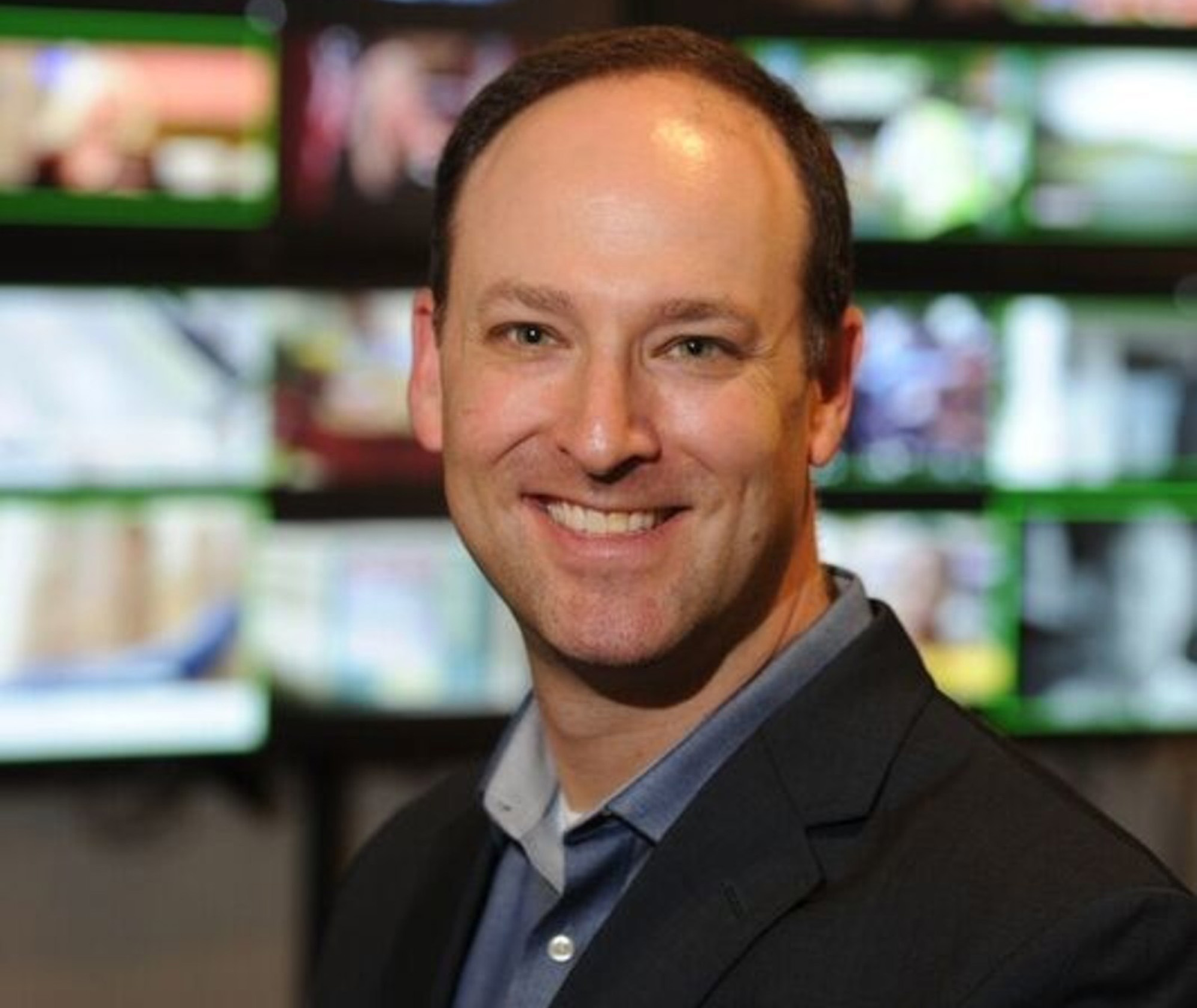Burgess Ponders What He’ll Do After Selling Ion Media
Exec sees untapped value for Scripps continuing his model
It’s mission accomplished for Brandon Burgess, the CEO of Ion Media. Starting in 2006, Burgess took Paxson Communications, changed the company’s name to Ion Media, built up viewership and last month agreed to sell it to E.W. Scripps Co. for $2.65 billion.
Burgess, 52, won’t be sticking around to help run Scripps’s newly enlarged national media unit and collect an earn-out.
“My role in the company in the deal, if it happens, is very, very clear, at least in my mind,” Burgess said in an interview. “I’m not going to be a part of it. I’m very supportive of everything, but I’ve been doing this a long time. This is a good outcome for everyone and I’m going to work my butt off to make it all happen. And then, I need to go off and fi nd some new things.”
It’s not unlike 15 years ago, Burgess said, when he was with NBC as it completed its acquisition of Universal and its cable channels. “I was on the 52nd floor saying, ‘Well, what do I want to do with my life?’ I said what I really want is to be a bigger fish in a smaller pond and have a lot more skin in the game.”
Betting on Broadcasting
Scanning the landscape at the time, before retransmission grew and cord-cutting emerged, he noticed that television was getting too expensive and decided to invest in free over-the-air broadcasting and turn it into a respectable value delivery platform.
“I remember saying to [then-NBC chairman and CEO] Bob Wright that this thing’s going to surprise us one day,” Burgess said.
Broadcasting & Cable Newsletter
The smarter way to stay on top of broadcasting and cable industry. Sign up below

NBC bought a 32% stake in Paxson and, amid a series of lawsuits, got an option on owner Bud Paxson’s shares. Paxson left and Burgess became CEO.
Ion’s balance sheet needed to be restructured, which was accomplished in a private-equity deal with Citadel LLC in 2007. Its costs had to be right-sized and new programming deals had to be struck. Eventually, Ion grew into the fifth-most watched TV network in terms of primetime audience, per Nielsen.
Come 2020, Burgess’s investors had been in Ion for a long time and were ready to get out, rather than put more money in. When the pandemic hit, it looked like they’d have to wait a bit longer before cashing out.
“There were not a not a lot of people that had the stomach and the appetite to do this right in the middle of a lockdown,” he said.

Burgess said he’d had a conversation with Scripps president and CEO Adam Symson at the 2019 NAB Show and the two companies’ strategies lined up perfectly. “The strength and quality of the Ion network is a testament to Brandon’s creativity and innovative approach to television,” Symson said. “While the rest of the broadcast industry looked only at the local marketplace, Brandon built a business of significant value by understanding early the importance of scale and going national.”
When Scripps said it was ready to do a deal, COVID or no COVID, Scripps secured the financing and brought in Warren Buffett’s Berkshire Hathaway, which invested $600 million in Scripps preferred shares.
“We on our own had an appetite to get bigger, by buying or by selling ourselves into something bigger, whichever came first,” Burgess said. “This company was built for this type of transaction. It was built as an enabling platform for when people see the value of broadcast.”
Streaming may be the bright, shiny object at this moment. But, Burgess noted, while having 1 million live viewers watching Blue Bloods may not be sexy, most streaming services are losing money while Ion enjoys a 60% profit margin.
And that’s without the retransmission consent revenue that sustains most broadcast companies. Ion chooses to get cable carriage via must-carry — which earns no fee. Burgess said that in order to get retrans, Ion would have had to acquire sports programming and big network-affiliated stations in order to have leverage in negotiations. Ion’s investors didn’t want to write that big a check. For now, Scripps said it will also follow that strategy.
Scripps plans to use the Ion stations’ signals to carry its digital networks, which will mean a big reduction in distribution costs. Scripps-owned Katz Networks pays stations to broadcast Bounce, Laff, Grit and Court TV on secondary digital channels.
“That’s a layup,” Burgess said, adding that Scripps is getting even more than it bargained for. “I hope Scripps will appreciate all this synergy I’m leaving on the table. They’re getting this thing perfectly set up.”
For one thing, Ion doesn’t have original content, but it does have full ad-supported streaming rights to the content it licenses from ViacomCBS and others.
And rolling up Scripps networks with Ion will create a package even more attractive to advertisers, Burgess believes. “We’ve positioned ourselves as a broadcast entity, but we’re offering ourselves to cable advertisers and they like that, because they’re getting broadcast eyeballs, which are much more expensive, and at cable prices,” he said. “That’s how we’ve grown our share every year and Scripps is going to find they can do the same thing supersized with multiple networks.” He compared Scripps’s collection of channels to a mini-Viacom.
There will also be programming synergies as Ion and Jonathan Katz of Scripps’s Katz Networks go to market together, he said. “Collective purchasing across multiple networks is the name of the game these days. That’s also one of the reasons why we, as a standalone company, wanted to operate more networks,” Burgess said. “The fact that Scripps is stepping into that is a no-brainer from my perspective.”
Once the Scripps deal closes, Burgess is planning to take a break. “I’ve been so deep into operations for so long. Now I kind of need to take a breather and look around and reassess a bit again,” he said. “I don’t have a business plan in my pocket.”
But he notes that this TV market is being completely reshuffled by COVID, by technology and by the capital markets. “I think values are going to be all over the place. We’re going to take a breath and see where the interesting bets are, on not just operational disruption but financial disruption. People have been riding a successful wave for a long time using conventional corporate finance metrics on debt and leverage. I think a lot of people are going to get re-shuffled and revalued.”
Instead of riding a wave, Burgess is looking forward to hitting the slopes. He started skiing as a child growing up. He likes extreme skiing, off helicopters and in back countries. Surprisingly, he doesn’t own a ski house. “You’re actually better off not owning a house in one place,” he said. His go-to location is Deer Valley in Park City, Utah, but after going there for a long time, it turned out that every other year, there was no snow. “So you just have to follow the snow around at this point,” he said.
“I have a long list of hobbies that I’ve under-invested in for a long time,” he added. “I have young kids and I have some real estate projects that I have to finish.”
And while he says he wants some time away from the grind of business, you never know when something will drag you back in.
“When I talk to friends of mine who get a divorce — and we all know divorce rates are 50/50, so every second one of your friends is getting a divorce, just mathematically — and when you say to them, what are you going to do? They say ‘Oh nothing. I'm just going to enjoy life.’ And then sure enough three months later, they have a girlfriend,” he said.
“I never fully understood that. That’s not where my head is at the moment. But it’s possible, right? You might go on a date and say, ‘Wow, you know, I really like this dating thing.’ But I only mean metaphorically speaking, obviously.”
Taking a Break, for Now
So unless there’s a project he falls in love with, Burgess said he wants to take a beat. “I want to take a moment and figure out what I am really good at and what I really like to do. Those things are not always the same thing, by the way. And I need to sort that out: What am I good at and do what I’m good at.”
But he already sounds a bit itchy to make any hiatus a brief one. “I am not going to deny that I’m intrigued with being a little bit more of an investor mindset as opposed to the day-to-day grinding it out on the operating side, to be honest with you,” he said. “But at the end of the day, it depends a bit on what’s the situation you’re looking at and What does it need? Those are exactly the right questions.”
Jon has been business editor of Broadcasting+Cable since 2010. He focuses on revenue-generating activities, including advertising and distribution, as well as executive intrigue and merger and acquisition activity. Just about any story is fair game, if a dollar sign can make its way into the article. Before B+C, Jon covered the industry for TVWeek, Cable World, Electronic Media, Advertising Age and The New York Post. A native New Yorker, Jon is hiding in plain sight in the suburbs of Chicago.

